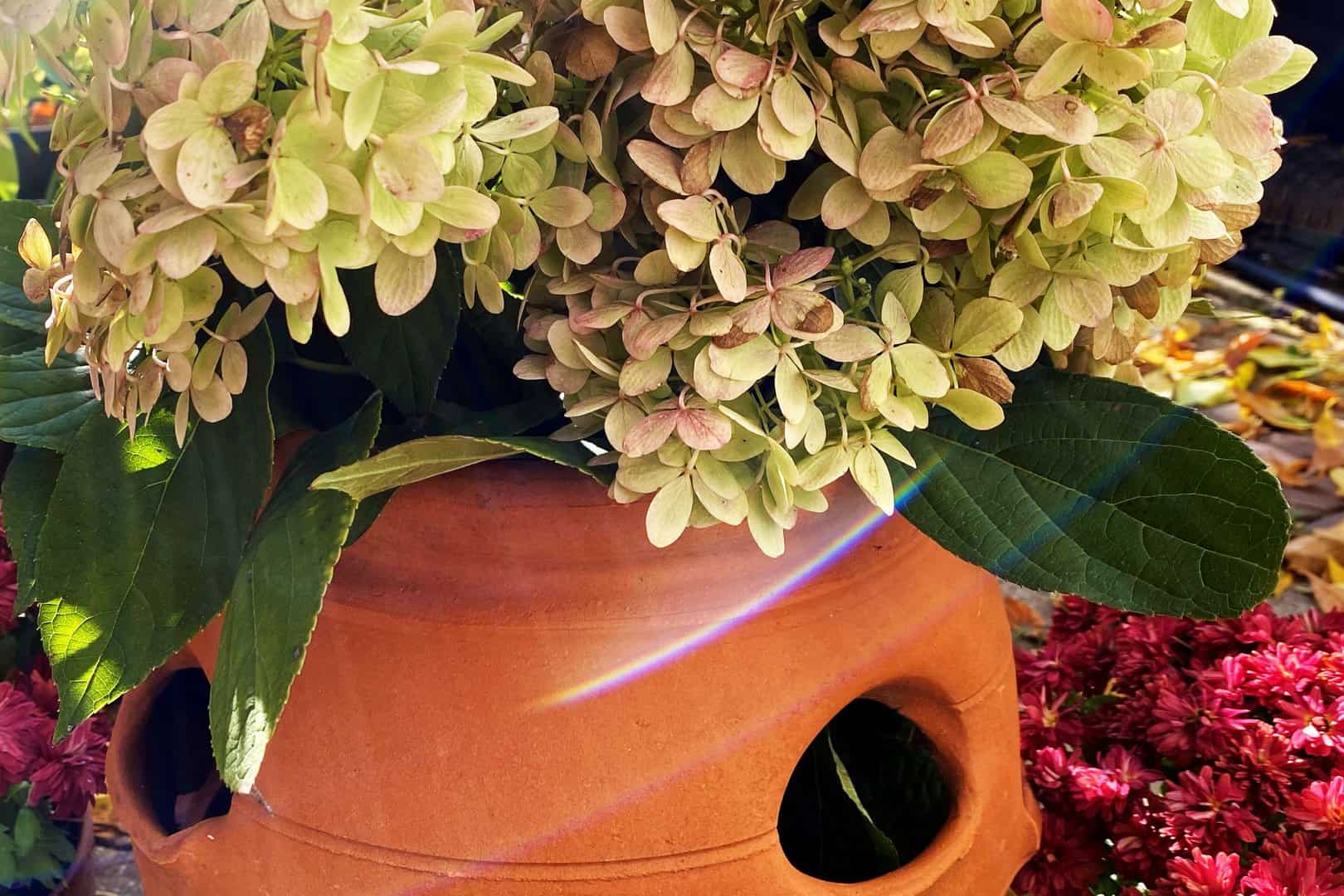

If you have a Hydrangea paniculata, like “Limelight,” “Bobo,” “Fire Light,” and “Quick Fire” varieties, or Hydrangea arborescens, like “Annabelle” and “Incrediball” varieties, then autumn is the time to prune your hydrangeas to prepare them for next year’s growth. Prune these hydrangeas as they should, and you’ll be helping your plants grow in the best shape, at the rate that they should. Cut them at the wrong place, then you can end up with unruly shrubs, or even worse, a stem that fails to bloom in spring. Follow our directions down below, and you should set your hydrangeas up to thrive.

A properly pruned Limelight Hydrangea stem
Pruning hydrangeas is a simple task that can be done quickly once you get the hang of it. Once you’ve determined what hydrangeas you have in your landscape, and if they need to be included in your fall cleanup, now you need to know where on the stem to cut.
Using Limelight Hydrangeas as an example, you should cut the shrub back by a third at the end of the year. If your hydrangeas are already established, as the ones pictured are (over 6 feet tall, with a wide circumference), then you should be able to see where the shrubs were pruned last year.

Pruned hydrangea blooms can be dried and used for decor
Look for where the new growth of this year meets the old growth of last year’s trim. New growth will be a smooth, thin stem, that gets more rough in texture as it gets further from a hydrangea bloom. Find where the new growth begins to turn into rough old growth, where it meets the thick branches of the shrub’s base.
Once you’ve located where your plant’s new growth meets old, you’ll need to find a growth node. A growth node is where the hydrangea stem pushes out new growth, allowing the shrub to make small progress in height year over year. These nodes will be easily identified by shape and pattern. By shape, look for an eye shaped oval on the side of a stem. By pattern, look for a repetition of these nodes over the length of the stem.
Once you’ve found what your hydrangea’s growth nodes look like, find a node that is just above where you pruned last year, where new growth is meeting old. Once you’ve found a node that is about a third of the way down from the top of your blooms, grab the stem you’d like to trim, and cut just above the node with pruning shears.
Again, avoid cutting directly across the growth node, as this will harm the plant and potentially stunt next year’s growth. This can create uneven hydrangea bushes or patchiness in blooms, both undesirable characteristics for a healthy hydrangea shrub.
Once you’ve pruned all of the stems of your hydrangea shrub back by the amount that they should, a third in this case for Limelight Hydrangea, you’re all done with this part of your fall cleanup. You can now use these pruned hydrangea blooms for drying and decoration, or just throw them directly into your compost pile.
Whispering Hills Garden and Landscape Center is a full service landscape center and nursery located in Cary, Illinois. Stop in today for our full selection of hydrangeas and perennial shrubs, now 50% off until end of season (Updated: 10/27/21).
Shop Archive



In an era where sustainability is more than a buzzword, Whispering Hills Garden Center

June is National Pollinator Month, a perfect time to celebrate the essential role pollinators